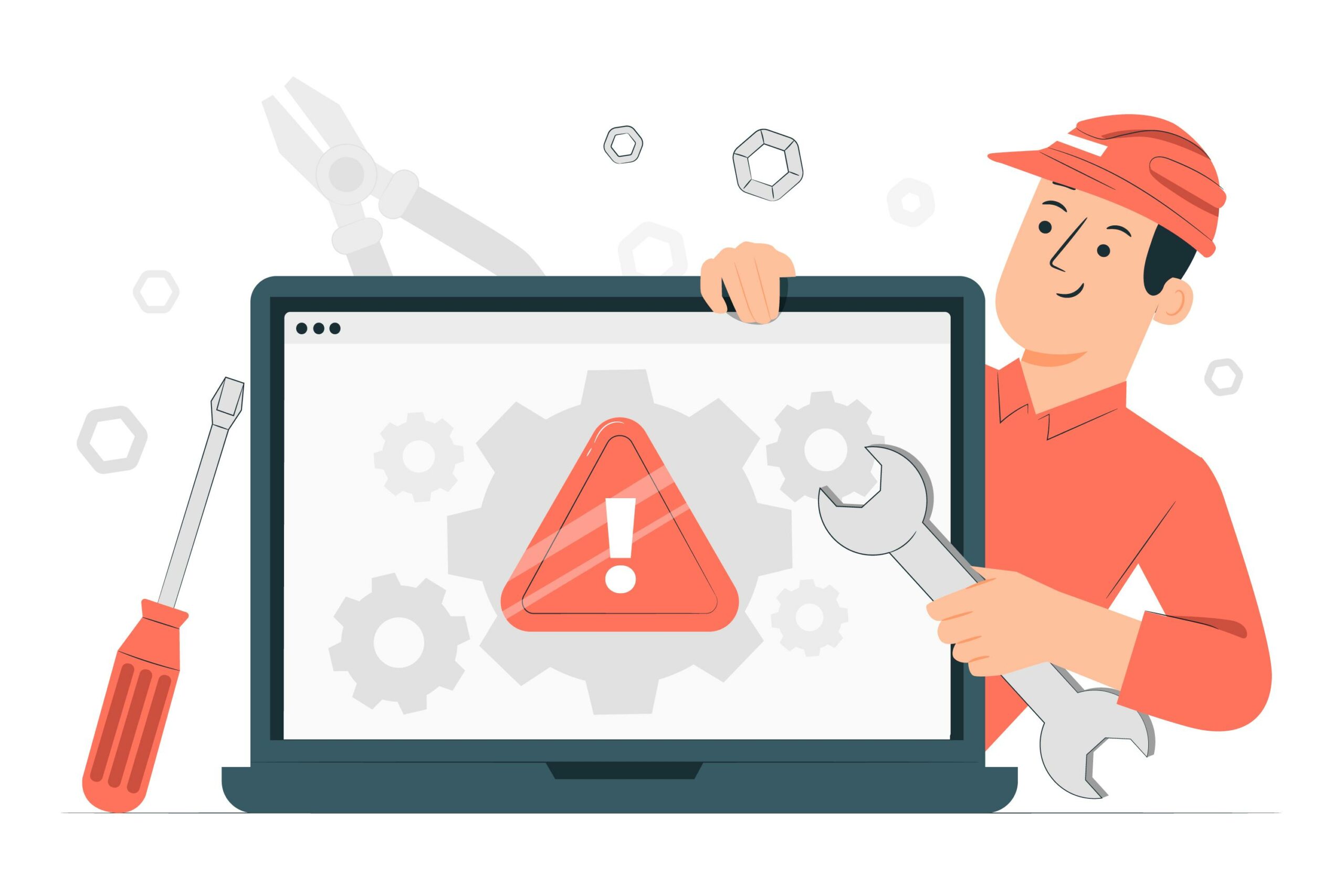The Maintenance Phase of a Project: A Guide to Sustained Success
The maintenance phase is a module of the project life cycle that mostly takes place after the completion of implementation and during the actual operation of a product or system. It is useful for guaranteeing future sustainability, reacting to context evolution, and constantly improving the value offered to the user. However, this is one of the areas that are usually overlooked by organizations with most of the emphasis being on other flashy operations such as the design and development stages. Nevertheless, in the absence of an effective maintenance plan, most projects may become useless, ineffective, or even non-usable at some point in time.
Why the Maintenance Phase Is Important

The maintenance phase helps to keep a project relevant, helpful, and invulnerable to threats from new upcoming projects. Here are several key reasons this phase is crucial:
Sustaining Operational Reliability
No matter how much you’ve tried to test your app, something will always go unnoticed during actual use. These problems are caught and solved by regular maintenance to any disruption which may in turn cause frustration to users.
Adapting to Evolving Needs
Users’ needs or expectations in a particular social platform vary with time due to factors such as introducing new trends or technologies. The maintenance phase makes a project responsive to these changes and offers the users a tailored experience.
Prolonging the System’s Life Cycle
If a project is not updated or maintained, it may become outdated, incompatible with other systems and technologies being used, and, therefore, depreciate in performance capacity. Maintenance is a way of continuing the life of that particular product to meet the current value of the standards set by the manufacturer.
Ensuring Security
As we continue to live in a world dominated by technological advancement, security is of utmost importance. The deployment phase enables the normal updates of the security flaw that secures the data of the users and ensures the well-being of the system.
The Maintenance Phase: Some Key Processes

The management of the change phase consists of various processes and activities and is primarily concerned with sustaining, enhancing, and safeguarding the project. The main activities can be grouped into four primary types:
Corrective Maintenance
Corrective maintenance is therefore generally more reactive and involves addressing problems that manifest while the product is in use. These problems may be bugs, performance issues, or any other unwanted behavior in the development due to some initial design or coding mistakes.
Adaptive Maintenance
Adaptive maintenance simply means modifying the system to enable it to work under conditions that are compulsory for it to work. This may embrace modification of the system to fit new hardware, new operating systems, or other third-party software. This type of maintenance is critical to this kind of flexibility where the system has to be made ready for change concerning the trends in technology or changes in the organization.
Perfective Maintenance
This kind of maintenance is preventive to enhance the performance of the system, or change according to the users’ feedback or the typical usage patterns. Perfective maintenance could include extending the current functionality, improving the look and feel, or improving the functionality and effectiveness of an existing feature.
Preventive Maintenance
In essence, preventive maintenance looks at ways and means of avoiding certain things to go wrong before they occur in the first place. This might have activities such as; Normal backups, restructuring the code, and updating of system documentation. Proactive measures keep off the chance of future outages and help to create a stable, more secure framework.
Key Maintenance Activities

A few main activities are usually carried out during the maintenance phase to continue sensing the system’s reliability, protect it, and optimize it for use. Here are some common maintenance activities that help sustain and improve a project:
Bug Identification and Resolution
They found that bug fixing is a continuous process because new bugs emerge after the deployment of the software. These problems are resolved by development teams immediately who patch up the system to ensure its dependability. Even small bugs, in this case, will only get worse and worsen the experience for the user in the long run.
Performance Optimization
In time, systems are frustrated because of either the increasing volume of data, more and more users, or code that has become less efficient over time. Optimization is a process of making fine adjustments and improvements in code and database as well as efficient handling of the serving platform depending on the ever-increasing traffic.
Security Patching and Vulnerability Management
Many security threats are dynamic and new ones are created frequently, maintenance teams always update the security software to patch known risks. This comprises updating software as well as protection of stored data, and adequate unauthorized user control since such aspects can play a crucial role when it comes to data protection and meeting regulatory requirements.
Feature Enhancements and User Feedback Integration
User feedback is a precious source of information during the maintenance phase because it shows how real users behave with the system and what changes must be made. According to the received feedback, teams can either extend the functionality of the service, enhance its existing features, or redesign its interface for better usability and user experience.
Data Backup and Disaster Recovery Planning
Data are considered valuable and the loss of data can have severe implications on an organization regardless of the size. Data backups into a secondary server and having a well-developed DR plan means that if the system fails, vital data should be retrieved in the shortest time possible.
Documentation Updates
Now and then changes will be made to the system; documentation is therefore important in keeping track of the changes made or made to the system. Documentation also allows future developers and stakeholders to better understand the development of the project when changes are made and in maintaining that the activities are consistent.
Compatibility and Integration Testing
Business systems often rely on external services, API, or other software components that can change with time. Maintenance guarantees compatibility with these components in the future reducing the likelihood of failure. Compatibility testing whenever a new version of a third-party service is released or the addition of new tools in an application is necessary to respect the User Interface and User Experience.
System Scaling and Load Management
As much as users may demand more services from the system, this may call for scaling of the system to address the new traffic density. Some of this can include changing or improving the servers you are utilizing, adjusting load balancers, or aligning its cloud resources to cater to higher pressures without necessarily compromising performance.
Some of the Specific Maintenance Activities include

Let’s consider a few practical examples of maintenance activities for different types of projects:
Software Application
An e-commerce-related mobile application may require the client’s update due to compatibility issues with a new release of an operating system. That may require changing the API connections, debugging problems, and adding new features that users may request, as new methods of payment.
Website Maintenance
Some maintenance may entail website monitoring of features, such as speed, plug-in, patching of vulnerabilities in the website, or even the creation of a more accessible site. In the case of a business changing its branding, it means the website will require design changes to reflect the new brand.
Manufacturing Equipment
Industrial maintenance may include periodic checks and inspections, upgrading of a product or a system in machines, and implementing measures that can minimize the frequent use of equipment thus leading to wear out. This can avoid early retirement of the equipment and time when the equipment is not functioning efficiently.
Network and IT Infrastructure
Keeping an organization’s network current requires periodic replacement of network hardware and software components, as well as constant checking for security threats or violations and assuring compatibility and proper functioning of all components.
Advantages of the Maintenance Stage

Improved User Satisfaction
Customers value those systems that run smoothly and adapt to their requirements. Constant updating of apps increases the appeal of the user application and gives them confidence in your product.
Longer System Life Span
Maintenance is done routinely to prevent the system from developing major problems and keeps it relevant and useful so that it does not require frequent rebuilds all over again.
Cost-Effectiveness
Budgeting for maintenance is better than repair or overhaul costs because preventive and adaptive maintenance are arranged to keep the system running smoothly.
Enhanced Security and Compliance
It is also important to note that these constant updates and security patches lower the vulnerability of an organization to data loss and maintain compliance with the rules and regulations of the various industries it deploys to.
Optimized Performance
Ongoing increments enhance the capability of the system, whether or not more people need the service or if there is some new technique that will apply to the system.
Conclusion
The commitment phase helps to guarantee that a project has benefits that sustain it after development is over. Through reflection, evaluation, improvement, and optimization of the system, the project maintenance phase guarantees that projects are effective, safe, and relevant to the users. Those organizations that have earmarked maintenance do good to their investment besides showing standard, security, and user satisfaction. To that end, as the technology base and user expectations progress, an effective long-term maintenance plan is the most important strategy for sustaining a project.
If you are looking for high-quality web or app development services feel free to drop us a message. We’re always happy to help you bring your digital projects to life!




 An app may hold fantastic and unique special features, but if the app is slow, has many problems, or is too complicated and thus, the consumers will have no choice but to abandon the app. On no account is there anyone who can doubt the importance of testing in the attempt to achieve an excellent level of User Experience with specific regard to the assessment of usability issues, or the measure of consistency between designs, or the appraisal of the capability of devices under certain conditions.
An app may hold fantastic and unique special features, but if the app is slow, has many problems, or is too complicated and thus, the consumers will have no choice but to abandon the app. On no account is there anyone who can doubt the importance of testing in the attempt to achieve an excellent level of User Experience with specific regard to the assessment of usability issues, or the measure of consistency between designs, or the appraisal of the capability of devices under certain conditions.


